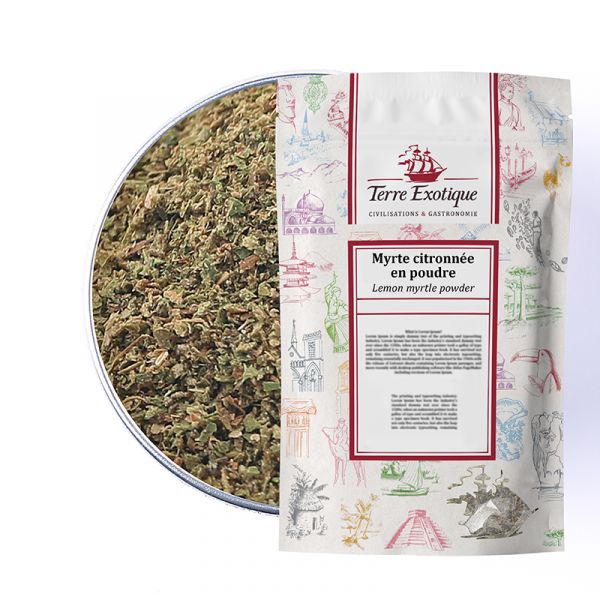
How to Use Lemon Myrtle in Dishes?
Combining sweetness and freshness, lemon myrtle will certainly enhance both your savory and sweet dishes.
Some Suggestions for Using Lemon Myrtle
Like lemon, lemon myrtle pairs perfectly with all seafood: fish and shellfish are sublimated by it. It delicately enhances your sauces and marinades and also pairs very well with white meats. And that's not all! Lemon myrtle is also used in sweet preparations. In a fruit salad, jam, natural yogurt, or even in a crème brûlée, lemon myrtle will delight your taste buds.
Here are our recipe ideas for using lemon myrtle:
- - Breaded Shrimp with Lemon Myrtle: add 2 teaspoons of lemon myrtle to the breading, then dip the shrimp in the mixture and cook for 1 minute per side;
- - White Fish Parmentier with Lemon Myrtle: add 1 tablespoon of lemon myrtle, salt, pepper, and olive oil to the fish and refrigerate, then assemble the parmentier;
- -Fruit Salad with Lemon Myrtle: add 2 teaspoons of lemon myrtle to the fruit salad, mix everything together, then serve.
The Fresh Aromas of Lemon Myrtle
As its name suggests, there is a resemblance between lemon and lemon myrtle. Indeed, it has a fragrance and aromas reminiscent of lemon, making it a popular ingredient to enhance your dishes, whether savory or sweet. There is, however, a notable difference that distinguishes lemon myrtle from lemon. In the mouth, lemon myrtle has neither bitterness nor acidity. Nevertheless, it reveals an intense freshness that will enhance your dishes with panache!
Focus on the Botany of Lemon Myrtle
Botanical Origin of Lemon Myrtle
Lemon myrtle, whose botanical name is backousia citriodora, is part of the Myrtaceae family. Native to the humid forests of Australia, this tree offers its leaves, used in cooking for their fresh and deliciously lemony scent. They are thin, oval, and a shiny green. Lemon myrtle is an evergreen tree that typically grows in tropical and subtropical regions. In its natural habitat, this tree can reach up to 20 meters in height. It requires a mild climate to develop.
The Origins of Lemon Myrtle
In the past, lemon myrtle was traditionally used by the indigenous peoples of Australia for its aromatic and medicinal properties. Even today, in addition to its culinary use, lemon myrtle is used to produce essential oil with multiple virtues. However, over time, lemon myrtle lost its popularity. It was a British chef named Jamie Oliver who used it in one of his recipes during a television show. This allowed it to regain its fame around the world.
| Price/kg | 247,5 |
|---|---|
| Allergen | Absence |
| Native country | AUSTRALIE |
| Genus and botanical species | Backhousia citriodora |
| Ingredients | lemon myrtle |
| Nutritional Info | VN Energie pour 100 g (energy for 100g) : 683 kJ / 163 kcal VN Matière grasse (fat) : 1,8 g Dont acide gras saturés (of which saturated fat) : 0,5 g VN Glucides (carbohydrate) : 1,8 g Dont sucres (of which sugars) : 1,8 g VN Protéines (protein) : 8,3 g Vn Sel (salt) : 0,08 g |
| Contenance | 100g |
| TRACES EVENTUELLES D'ALLERGÈNES | céleri, sésame, moutarde, fruits à coques. |
 Français
Français 